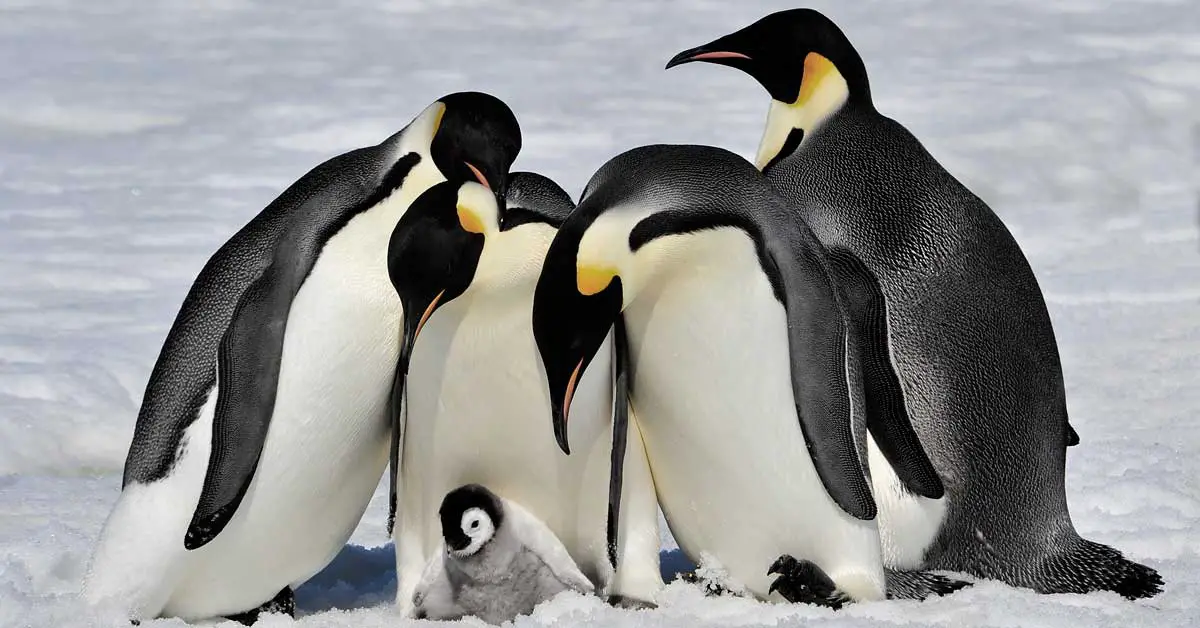
World’s Second-Largest Emperor Penguin Colony Wiped Out as Ice Shelf Collapses
(April 26, 2019) — The world’s second largest emperor penguin colony is believed to have been effectively wiped out overnight, with thousands of chicks drowning after an ice shelf in Antarctica collapsed.
Since the catastrophic collapse of the ice sheet at Halley Bay in 2016, no breeding has been detected in the area, scientists say.
Usually 15,000 to 24,000 breeding pairs of emperor penguins flock each year to the breeding site – around 5-9 percent of the entire global emperor penguin population.
The bay in the Weddell Sea was previously considered a refuge for penguins in one of the coldest parts of the continent, and was expected to remain suitable for penguins this century despite climate change affecting Antarctic sea ice.
Yet almost no emperor penguins have been there since, according to a team from the British Antarctic Survey, who used high-resolution satellite photographs of the birds’ guano over time, to reveal the findings.
“We haven’t seen a breeding failure on a scale like this in 60 years,” says one of the study’s authors Phil Trathan, who is head of conservation biology at the British Antarctic Survey.
Emperor penguins need stable sea ice on which to breed, and this icy platform must last from April, when the birds arrive, until December, when their chicks fledge.
They are the largest penguin species, weighing up to 40kg and living for roughly 20 years. They incubate their eggs and tend to their chicks – one per pair – on the sea ice. After breeding and tending to the chicks, they move to the open sea.
For the last 60 years, the sea ice conditions in the Halley Bay site have been stable and reliable. But in 2016, after a period of abnormally stormy weather, the ice broke up in October, well before any emperor chicks would have fledged.
The impact and subsequent state of the ice means the colony has been almost entirely wiped out.
While the Halley Bay colony has now all but disappeared, the nearby Dawson-Lambton colony has markedly increased in size, indicating that many of the adult emperors have moved there, seeking better breeding grounds as environmental conditions continue to change.

The birds’ rapid relocation to a more stable breeding ground is significant and is encouraging, the scientists say, as until now it was not known whether the penguins would seek alternative sites in response to significant changes in their local environment.
But the rise in numbers at Dawson-Lambton does not account for all the numbers lost at Halley Bay, Dr Trathan says. “Not everybody has gone to Dawson-Lambton yet,” he says.
Lead author and BAS remote sensing specialist, Dr Peter Fretwell, says: “We have been tracking the population of this, and other colonies in the region, for the last decade using very high resolution satellite imagery.
“These images have clearly shown the catastrophic breeding failure at this site over the last three years. Our specialised satellite image analysis can detect individuals and penguin huddles, so we can estimate the population based on the known density of the groups to give reliable estimate of colony size.”
Dr Trathan says: “It is impossible to say whether the changes in sea-ice conditions at Halley Bay are specifically related to climate change, but such a complete failure to breed successfully is unprecedented at this site.
“Even taking into account levels of ecological uncertainty, published models suggest that emperor penguins numbers are set to fall dramatically, losing 50-70 per cent of their numbers before the end of this century as sea-ice conditions change as a result of climate change.”
The team’s findings are published in the journal Antarctic Science.
Posted in accordance with Title 17, Section 107, US Code, for noncommercial, educational purposes.